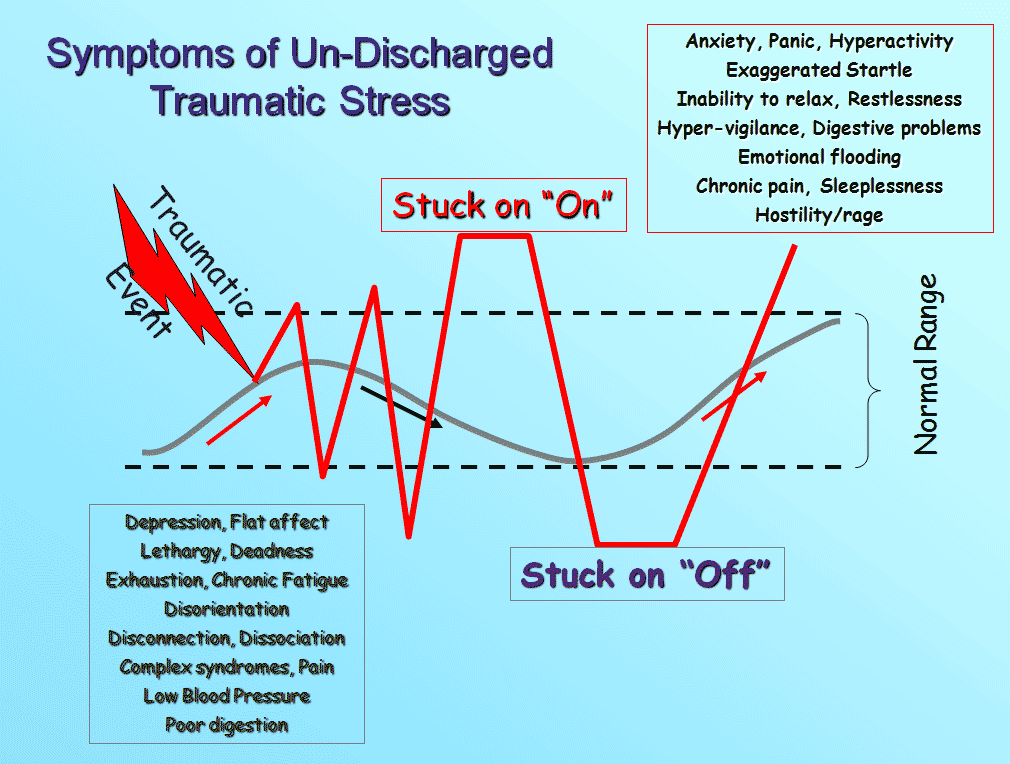in Mindfulness, Yoga & Pilates
What is Somatic Experiencing (SE) and How Can it Help You?

As someone who has been working with people’s bodies and their movement ability for many years, deciding to study Somatic Experiencing really is a no-brainer for me.
Some people ask me why I decided to train in this trauma resolution and resilience-building modality, and how it relates to me as a Pilates Teacher, Movement- and Body Worker. So let me tell you about Somatic Experiencing and the connection between this powerful coaching method and movement work will become clear. Furthermore, you might discover, like me, what potential lies in combining these disciplines.
What is Somatic Experiencing?
Somatic Experiencing (SE) was developed by Clinical Psychologist and Author Peter Levine, as a way to help people overcome PTSD and move on from trauma and its varied, debilitating physical, emotional and behavioural symptoms. What makes Levine’s approach special is that he took his inspiration from the animal world. It all stemmed from the question: “Why can animals in the wild move on from life-threatening, vicious attacks like nothing happened, while humans often can not?” This question and his following research lead him to the conclusion that trauma is a physiological response to an also physical, disrupted or suppressed threat response cycle. While animals in the wild will go through whatever physical urge they have instantly after escaping an attack, humans often do not find themselves in situations where they feel they can allow themselves to do that. We have a self-critical conscious mind that may tell us we need to pull ourselves together or hide the incident to not alarm others. We are good at overriding and suppressing the instinctive communication from our nervous system, while wild animals do not even second guess theirs. It is interesting to note that domesticated animals and animals in captivity, which are confined by us or trained by us to conform somewhat to our lifestyle, trauma can also be observed.

Somatic Experiencing is a way of paying attention to our felt sense and physicality in the here and now, a bit as we do in mindfulness. However, it goes further, by carefully and gradually allowing the body and the nervous system to complete the threat response cycle retrospectively in order to allow the person to gradually free themselves from traumatic stress. This is done very carefully and slowly. Also building internal resources in order to cope with the intensity of facing past trauma is key, before taking things further. This is in order to avoid re-traumatisation, which has a higher risk of occurring in therapies where the traumatic memory may be explored a lot more directly. SE is a relatively safe and gentle way of working with trauma, as it only uses minimal material from the traumatic event itself and it focuses on the responses in the body in the here and now, rather than taking us back to memory. One can also use SE in a more abstract way in cases where it is not clear what exactly has caused the traumatic stress. However while SE works with trauma through the body and the felt sense, rather than directly through cognitive memory and understanding, it also has the potential to be very subtly powerful. Working with the old, primitive, instinctive part of our brain (the reptilian brain) takes us right to our very core of sensation.
Abi Blakesley, a clinical somatic Psychologist and Somatic Experiencing faculty member told me, that she likes to think of SE not just as a Trauma Resolution model, but a Resilience building model. This makes sense to me, as SE can be effectively used in a much wider context than trauma resolution. I recently attended a workshop with Peter Levine himself, where we used SE in order to help performers and public speakers to improve their performance and build confidence. And I myself have had SE sessions, with the goal to resolve minor upsets or recurring problems in my life with amazing results.
What is Trauma?
This is a really important question since “trauma” is a very popular word at the moment. With the first diagnosis of PTSD (previously known as shell shock), awareness of trauma and its effects has massively improved. There are subcategories of trauma, such as primary, secondary, historical, generational trauma, as well as distinctions between shock trauma and developmental trauma. We all have a general, somewhat vague idea of what trauma is, but how would you define it? Based on my SE training I would define it as follows:
Trauma originates in the autonomic nervous system, which deals with our fight, flight and freeze responses, as well as with regeneration, rest and learning. It is a physical change, affecting us in many different ways, when our autonomic nervous system is pushed out of balance too much, or for too long. The window of tolerance graphic below explains this very simply and visually.
Based on this definition we may find, that to be fair, many of us have dealt with a level of trauma at some point or another, some more severely than others. We may find we all know someone who has slightly changed after a certain time or event in their life. And they are just not as resilient as they were or have developed fears or stress about certain things. Or perhaps they had an accident and a physical injury from this event just won’t heal. Or since then they experience repetitive pain on one side of their body.
We could say that trauma really is part of our modern society and life. And the word does not always mean classic shell shock -like PTSD. It can mean the most horrific debilitating trauma, and it can also be a more sneaky underlying issue, that causes us to develop chronic pain, seemingly random anxiety attacks, depression or chronic fatigue.
When might SE be for You?
If you know you are struggling with the symptoms and effects of trauma, and you would like to choose an embodied, natural or gentle way of freeing yourself from it, and you would prefer not to dig up all the details from the horrible past you experienced all at once, SE might be for you.
But also, you may be struggling with symptoms and you are not aware of any trauma, that you might have encountered, SE may still be very effective. Remember, trauma does not always have to stem from war or near-death experiences. You may not be aware of it but perhaps you have had a bit of a prolonged stressful time and some small things all happened around a similar time. This accumulatively may have just pushed you out of your window of tolerance. You may not feel anything too dramatic, because your body is taking the full hit of it, and reacting with pain or burnout. By connecting with your body through SE you may get to know yourself a lot more deeply and become aware of things you previously choose to shut out. SE can help you find new, easier and more enjoyable ways to live and build healthy resilience for the future.
As mentioned above, perhaps you really don’t feel you have any trauma, but you struggle with confidence. You are a comfort eater, or do you hate getting nervous every time you have to give a talk or facilitate a meeting at work? Perhaps you are a performer and you are frustrated because you are never quite as good in front of people as you are in rehearsal. Maybe you have a funny habit you would like to lose, or you feel there is something that holds you back from truly being free in your body and life. SE can help you explore these things in your body and help you build confidence, resilience and to trust your true self to be who you want to be without having to try so hard.
Why is SE for Me?
With a background in somatic body and movement work, rehabilitation, the arts and NLP coaching SE felt like the obvious way for me to continue the work I have been doing on myself to overcome many different subtle issues I was struggling with and the results that I am seeing in myself personally are blowing me away and are making me so confident, that becoming an SE practitioner and bringing this amazing modality into my movement work will help others too. What is more important than us being able to live our lives fully without being held back by trauma or anything else within us?
Having completed my 1st or 3 years of studying I am now ready to offer SE sessions. As I am still a student I do not work with deep trauma just yet, but even if you are aware of serious trauma in your past, it is a great time to get started with SE, as we never dive right into the traumatic event. In SE we always start with building resilience, so that we have the internal resources to deal with the heavy stuff when we start peeling away at it. SE sessions with me are available on skype and in person, both in London and Leigh on Sea at a discounted rate to reflect my learning process.
Please get in touch if you have any questions about this or if you would like to try Somatic Experiencing.
You can contact Kristin at The Body Matters on 01702 714968.
- The Thing About Mixed Feelings Is… - 4th June 2023
- Overthinkers – Here Is What You Really Need To Know - 28th April 2023
- Why Emotions Can Be Overwhelming - 13th December 2022
